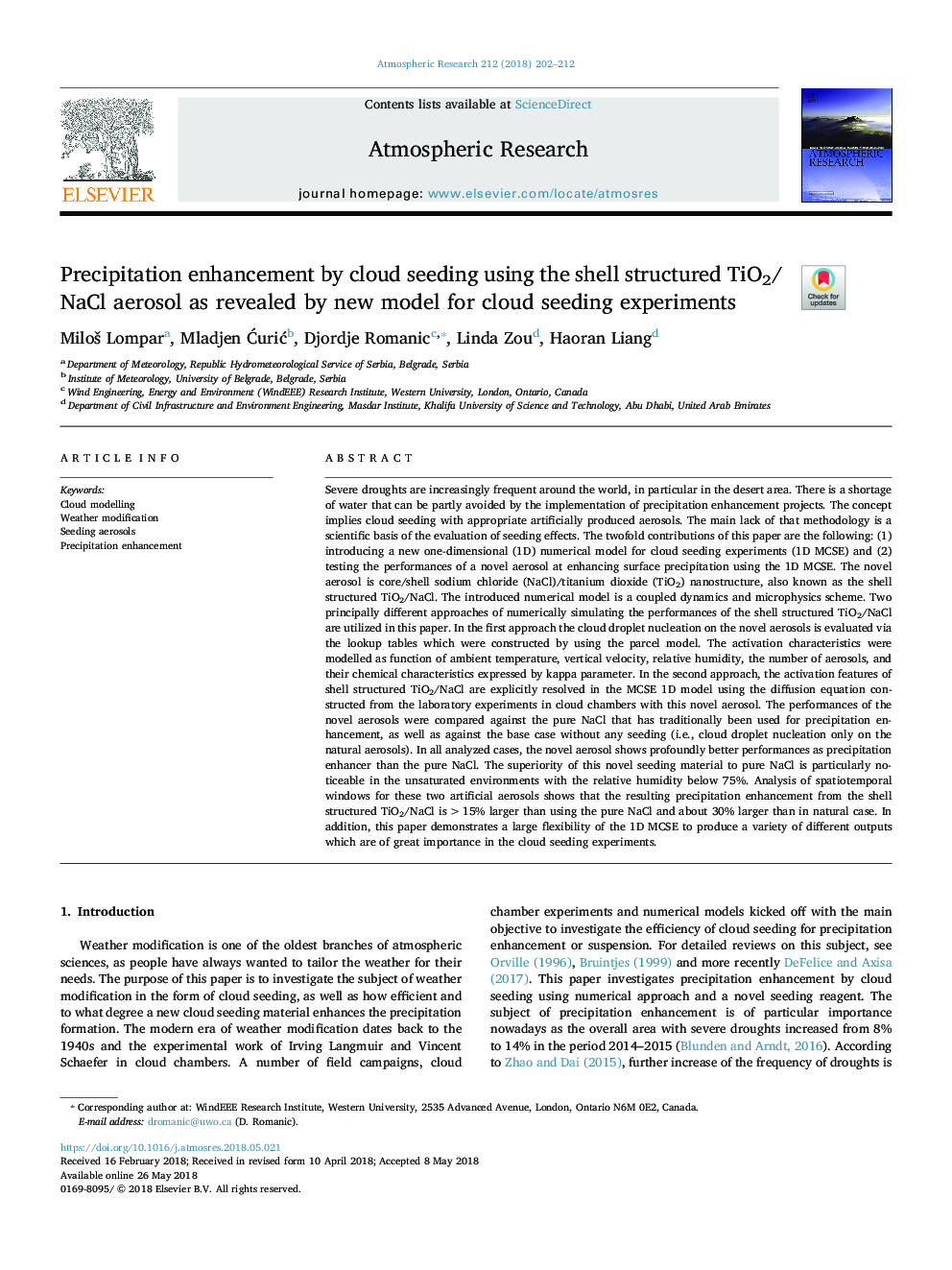| Article ID | Journal | Published Year | Pages | File Type |
|---|---|---|---|---|
| 8864525 | Atmospheric Research | 2018 | 11 Pages |
Abstract
Severe droughts are increasingly frequent around the world, in particular in the desert area. There is a shortage of water that can be partly avoided by the implementation of precipitation enhancement projects. The concept implies cloud seeding with appropriate artificially produced aerosols. The main lack of that methodology is a scientific basis of the evaluation of seeding effects. The twofold contributions of this paper are the following: (1) introducing a new one-dimensional (1D) numerical model for cloud seeding experiments (1D MCSE) and (2) testing the performances of a novel aerosol at enhancing surface precipitation using the 1D MCSE. The novel aerosol is core/shell sodium chloride (NaCl)/titanium dioxide (TiO2) nanostructure, also known as the shell structured TiO2/NaCl. The introduced numerical model is a coupled dynamics and microphysics scheme. Two principally different approaches of numerically simulating the performances of the shell structured TiO2/NaCl are utilized in this paper. In the first approach the cloud droplet nucleation on the novel aerosols is evaluated via the lookup tables which were constructed by using the parcel model. The activation characteristics were modelled as function of ambient temperature, vertical velocity, relative humidity, the number of aerosols, and their chemical characteristics expressed by kappa parameter. In the second approach, the activation features of shell structured TiO2/NaCl are explicitly resolved in the MCSE 1D model using the diffusion equation constructed from the laboratory experiments in cloud chambers with this novel aerosol. The performances of the novel aerosols were compared against the pure NaCl that has traditionally been used for precipitation enhancement, as well as against the base case without any seeding (i.e., cloud droplet nucleation only on the natural aerosols). In all analyzed cases, the novel aerosol shows profoundly better performances as precipitation enhancer than the pure NaCl. The superiority of this novel seeding material to pure NaCl is particularly noticeable in the unsaturated environments with the relative humidity below 75%. Analysis of spatiotemporal windows for these two artificial aerosols shows that the resulting precipitation enhancement from the shell structured TiO2/NaCl is >15% larger than using the pure NaCl and about 30% larger than in natural case. In addition, this paper demonstrates a large flexibility of the 1D MCSE to produce a variety of different outputs which are of great importance in the cloud seeding experiments.
Keywords
Related Topics
Physical Sciences and Engineering
Earth and Planetary Sciences
Atmospheric Science
Authors
MiloÅ¡ Lompar, Mladjen ÄuriÄ, Djordje Romanic, Linda Zou, Haoran Liang,
